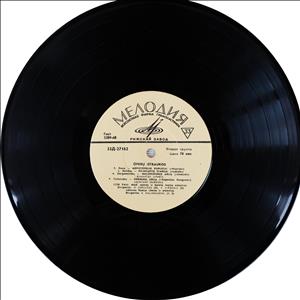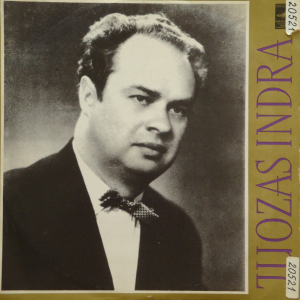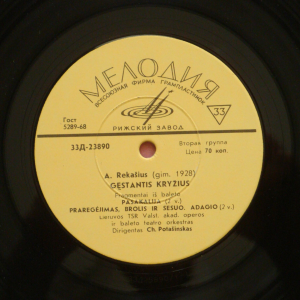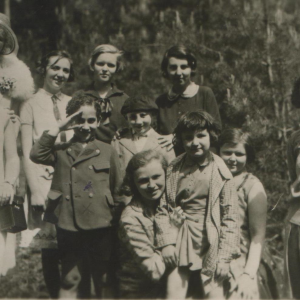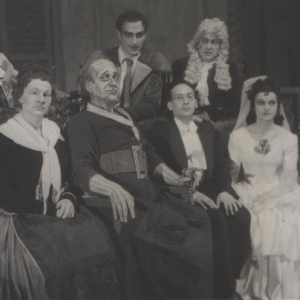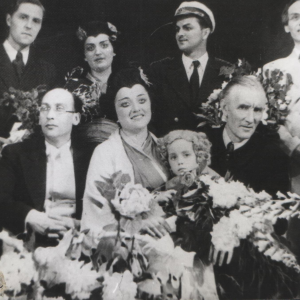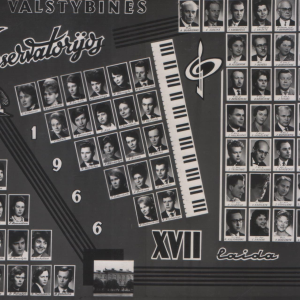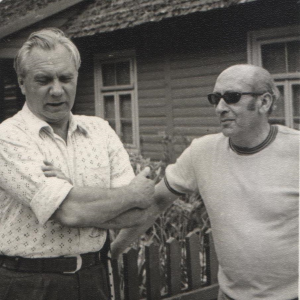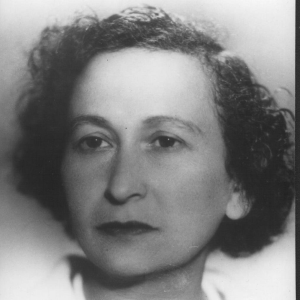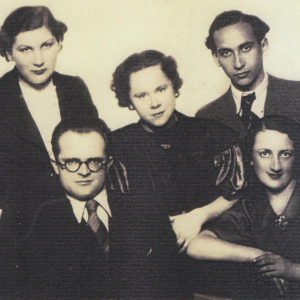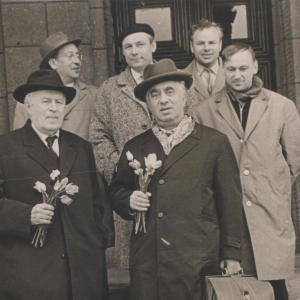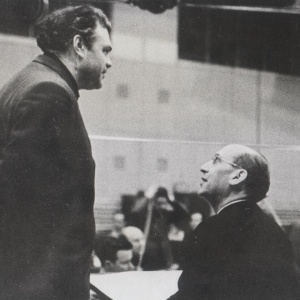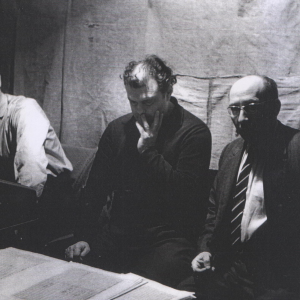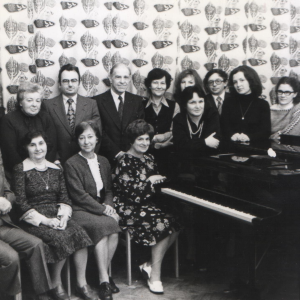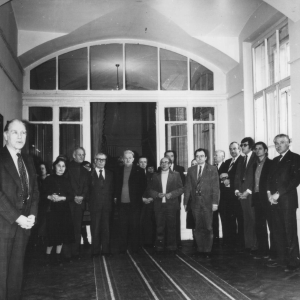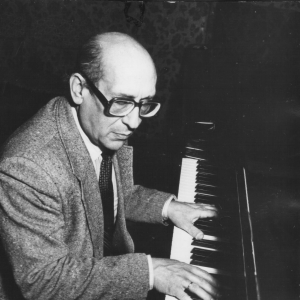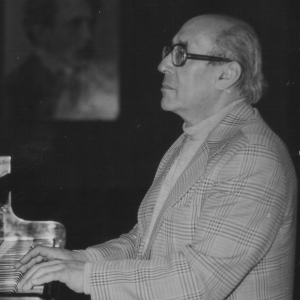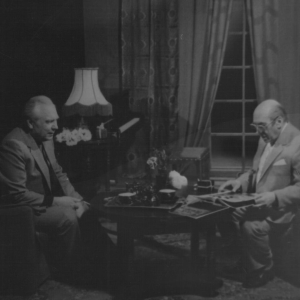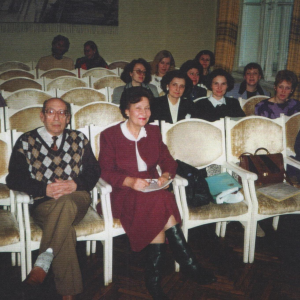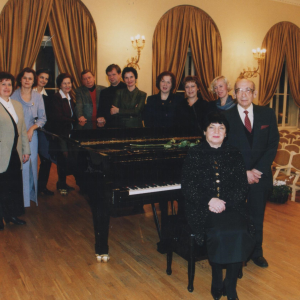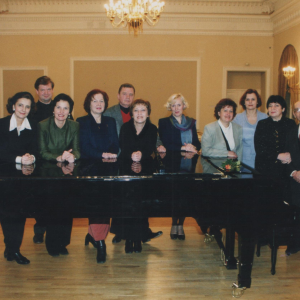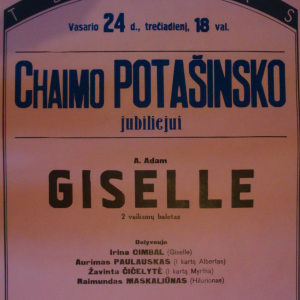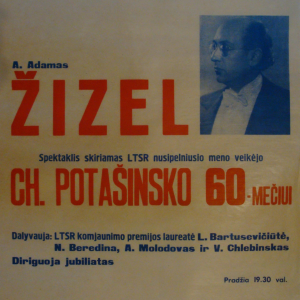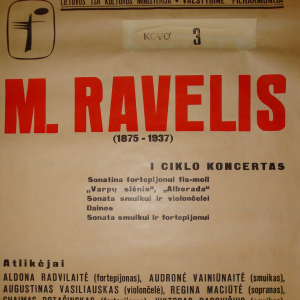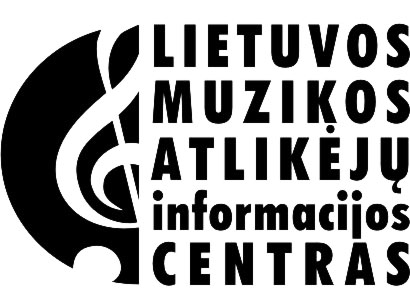
Chaimas Potašinskas (1924-2009)

Chaimas Potašinskas (born on 10 January 1924 in Kaunas – died on 19 August 2009 in Vilnius) was a pianist, a conductor, a concertmaster and a pedagogue.
Potašinskas Chaimas was a long-time conductor at the Lithuanian Opera and Ballet Theatre, a legendary concertmaster who devoted 55 years of his life to this activity, laid a sound foundation for the school of concertmasters in Lithuania, accompanied many singers of the country on the piano, educated several generations of performers of this genre.
Chaimas Potašinskas was born on 10 January 1924 in Kaunas. His father Lazaris Potašinskas, an excellent tailor of Kaunas, and his mother, a passionate music lover, did their best to give their daughter Roza and son Chaimas a good music education. The children learned the basics of playing the piano at a private studio of Else Fansen-Herbeck. In his early childhood Chaimas already played the piano brilliantly, gave concerts and earned the name of a wunderkind. In 1935, Chaimas Potašinskas improved his skills in Italy under Prof. Alessandro Tamburini. At the age of thirteen Chaimas gave a concert in the hall of the State Theatre, and when he was fourteen he played Edvard Grieg piano concerto with the Radiophone Orchestra. In 1937, at the age of thirteen, he entered the Kaunas Conservatory and graduated from it in 1938. He studied in Vytautas Bacevičius class, later developed his playing skills under Vladimir Ružicki. The war that broke out took the Potašinskai family to Astrakhan, later – to Samarkand, in 1943, the family settled in Pereslavl-Zalessky (Russia). It was there that Chaimas Potašinskas set up the first jazz ensemble of the Lithuanian Diaspora. After World War II was over, he continued his piano studies at the Lithuanian Conservatory; he graduated from it by taking examinations without attending lectures in 1954 being already an Associate Professor of that school of higher education.
Between 1944 and 1949, Chaimas Potašinskas worked as a Vilnius radiophone music editor-in-chief. He brought musicians together and established a symphony orchestra, and a vocal ensemble.
From 1949 to 1983, Chaimas Potašinskas was a conductor of the Lithuanian National Opera and Ballet Theatre. The first opera that he conducted was Gioachino Rossini’s The Barber of Seville (1949). Though Chaimas Potašinskas conducted a great number of operas, first of all, he was a ballet conductor who delicately and subtly felt the specificity of this genre. ‘The ballet is a highly specific genre. People work hard on the stage. (…) The conductor must intuitively feel the dancers, as he feels the partners-singers. Not the breathing but rhythms of the body plastic, flying jumps, pirouette reliefs.’ (Rita Aleknaitė-Bieliauskienė).
In the course of 35 years of work at the theatre the Maestro produced 43 ballets and one opera, conducted about 3000 performances. He constantly cooperated with the Lithuanian composers Eduardas Balsys, Julius Juzeliūnas, Anatnas Rekašius, Juozas Indra. Chaimas Potašinskas produced a large number of ballets by Lithuanian composers, including Juozas Pakalnis’ Sužadėtinė [The Fiancée], Julius Juzeliūnas’ Ant marių kranto [On the Lagoon Bank], Eduardas Balsys’ Eglė the Queen of Grass Snakes. He worked with Aram Khachaturian, the Estonian composer Lidija Auster. When staging a new performance he used to work a lot with the authors, assisted in arranging the orchestration. He enjoyed working with amateur ensembles, led the vocal ensemble of Vilnius Clinical Hospital.
Pedagogical activity
In 1945, Chaimas Potašinskas started his pedagogical activities in Vilnius and in 1949 at the Lithuanian Conservatory (currently the Lithuanian Academy of Music and Theatre), in the Piano and Concertmaster Departments. Veronika Vitaitė, Milda Lapėnaitė, Marija Radvilaitė, Virginija Dabkutė graduated from his chamber ensemble class. He taught chamber singing. Such famous singers as Elena Čiudakova, Elena Saulevičiūtė, Romutė Tumuliauskaitė were his pupils. He worked at the Conservatory for 55 years. ‘Chaimas Potašinskas was a man who created its atmosphere and laid a foundation for a school of concertmasters’, Prof. Irena Armonienė said. Currently the Department of Concertmasters of the Lithuanian Academy of Music and Theatre is a unique subdivision among the Higher Schools of Music of Western Europe training professional pianist concertmasters. Chaimas Potašinskas educated several generations of the performers of chamber music genre, widely-known Lithuanian artists, pianists, concertmasters and pedagogues. In 1984, he was awarded a pedagogic (academic) title of Professor.
Chaimas Potašinskas was often the first performer and editor of musical compositions by Lithuanian composers. For many years he accompanied almost all the singers of the country on the piano and earned the reputation of ‘a legendary concertmaster’. He could read the most complicated scores, chamber music compositions without any preparation; he felt intuitively the underlying implications and the partner.
As a conductor and concertmaster who accompanied the most famous Lithuanian singers on the piano– Kipras Petrauskas, Eduardas Kaniava, Regina Maciūtė, Valentinas Adamkevičius, Marija Aleškevičiūtė, Beatričė Grincevičiūtė, Jonas Stasiūnas, Virgilijus Noreika, Elena Čiudakova, violinists Aleksandras Livontasi, Jakovas Targonskis – he toured Lithuanian cities, regions, the former Soviet Union, Norway, Finland, Poland, Germany. Many of his compositions were recorded in Lithuanian radio. Chaimas Potašinskas created jazz compositions, songs, music for radio plays, arranged vocal and instrumental compositions. He also wrote articles and prepared radio broadcasts, translated some books on music into the Lithuanian language. For his outstanding performance and merits to Lithuanian culture, in 2000, Chaimas Potašinskas was awarded the Order of the Lithuanian Grand Duke Gediminas.
Prof. Liucija Drąsutienė recalls her former teacher and colleague as a pianist and conductor of an extraordinary talent, a universal musician and an excellent improviser. The Maestro’s pupils remember their teacher as an artistic, playful and warm person who was always ready to give a helping hand to everybody. (Muzikos barai, 2016, p.35)
Prof. Chaimas Potašinskas died on 19 August 2009, buried in Antakalnis Cemetery in Vilnius.
Prepared by Aldona Juodelienė
Sources:
1. Aleknaitė-Bieliauskienė Rita. „Lietuvos vunderkindas“. Literatūra ir menas, 1999 kovo 6 d.
2. Aleknaitė-Bieliauskienė Rita. „Kauno vunderkindo istorija“. Muzikos barai, 2016 biželis, Nr. 5-6, p.36
3. Juodpusis Vaclovas. Potašinskas Chaimas. Muzikos enciklopedija, 2007, T 3, p.135
4. Kauzonas Ferdinandas. „Kaip studentas buvo docentas“. Literatūra ir menas,1999, vasario 20 d.
5. Mažintas Egidijus. „Dirigento, pianisto profesoriaus Chaimo Potašinsko paveikslas“. Lietuvos aidas, 2001 vasario 19 d., Nr. 40
6. „Mocartiškos dvasios Maestro arba Laisvas muzikoje“. Muzikos barai, 2016 biželis, Nr. 5-6, p. 34
7. Rupeikaitė Kamilė. „Stebuklo žmogų prisimenant“. 7 meno dienos. Prieiga per internetą: http://archyvas.7md.lt/lt/2010-03-26/muzika/stebuklo_zmogu_prisimenant.html?print
Ballets
A. Adam
Giselle, 1970
Le Corsaire,1964
B. Asafyev
The Fountain of Bakhchisarai
L. Auster
Tiina, 1959
The Dream of the North, 1961
E. Balsys
„Eglė žalčių karalienė“ / Egle the Queen of Grass Snakes, 1960, 1976
B. Bitov
Twelve months, 1958
F. Chopin
Chopiniana, 1977
M. Chulaki
Imaginary bridegroom,1962
Servant of two gentlemen, 1979
L. Delibes
Coppelia, 1954
Sylvia, 1961
R. Drigo
The Millions of Harlequin, 1971
J. Gruodis
„Jūratė ir Kastytis“, 1965
A. Glazunov
Raymonda, 1951
R. Gliere
The Red Flower, 1949
E. Gieg
Peer Gynt, 1955
R. Grinblat
„Rigonda“, 1960
J. Indra
„Audronė“, 1957, 1969
F. Yarulin
Shurale, 1961
J. Juzeliūnas
„Ant marių kranto“/ On the Lagoon Bank, 1975
A. Krein
Laurencia, 1950
L. Minkus
Don Quichote, 1968, 1978
Paquita, 1972
I. Morozov
Doctor Auch, 1954
J. Pakalnis
„Sužadėtinė“ / The Fiancée
C. Pugni
La Esmeralda, 1962
M. Ravel
„Bolero“, 1959
A. Rekašius
„Gęstantis kryžius“, 1966
N. Rimsky-Korsakov
Scheherazade, 1959
B. Pavlovsky
Snow Maiden and the Seven Dwarfs, 1972
S. Prokofviev
Peter and the Wolf, 1977
Romeo and Juliet
J. Strauss
The Blue Danube, 1958
A. Khachaturian
Spartacus, 1963
R. Shchedrin
„Ana Karenina“
D. Shostakovich
The Lady and the Hooligan, 1971
P. Tchaikovsky
The Swan Lake, 1966, 1974
The Sleeping Beauty, 1967
The Nutcracker, 1964
C. Veber
Invitation to dance, 1959
Operas
G. Bizet
Carmen
A. Dargomyzhsky
Rusalka
G. Gershwin
Porgy and Bess
Ch. Gounod
Faust
S. Moniuszko
„Halka“
G. Puccini
Madama Butterfly
N. Rimsky-Korsakov
The Tsar's Bride
The Snow Maiden
G. Rossini
The Barber of Seville, 1949
B. Smetana
The Bartered Bride
G. Verdi
Un ballo in maschera, 1967
Rigoletto
La traviata
P. Tchaikovsky
Eugene Onegin
